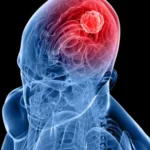
Eating Disorders (ED) are among the most dangerous psychopathologies with a greater capacity to quickly wear down the physical and mental health of those who suffer from them; some, such as anorexia, lead to death in a relatively large proportion of cases.
However, despite the efforts that have been made in recent years to raise awareness in society about the importance of taking mental health problems seriously, today it is not uncommon to see how the fact of suffering from a mental illness is normalized. psychopathology of this type; In some cases, there is even an attempt to instill the idea that excessively “controlling” what one eats is a necessity to have professional success in certain fields.
In this article We will see why it is very important to take EDs seriously and what makes them dangerous.
Characteristics of the main TCAs
These are the main Eating Disorders and the distinctive characteristics of each of them.
1. Anorexia
The anorexia It is probably the Eating Disorder associated with higher mortality; It is estimated that 5% of people who develop it die during the ten years following the appearance of this psychopathology.
It is characterized by making the person who suffers from it develop the illusion that they are well above their ideal weight., which causes great discomfort. The anguish caused by not accepting oneself makes the person try by all means to lose weight, limiting the intake of food and drinks other than water to a minimum; Even when their Body Mass Index is well below what is indicated for their age and size, the person with anorexia continues to see themselves as “very fat” and continues with their goal of losing as much weight as possible, which generates serious health problems. malnutrition and, over time, brings her closer to death from starvation and other mental health complications resulting from that lifestyle.
This alteration mainly affects young women, but can also occur in men.
2. Bulimia
Bulimia is an eating disorder in which excessive binge eating alternates and, on the other hand, vomiting and other purgative behaviors to try to “compensate” for overeating.
It is a psychopathology in which there is generally no distorted perception of one’s own body weight that we do find in anorexia, and although many times those who suffer from this alteration try to follow a low-calorie diet to avoid accumulating fat, they respond to situations associated with stress and anxiety by gorging on food, even without being truly hungry; This is behavior they perceive as uncontrollable, an impulse they have trouble repressing. After this type of binge eating comes feelings of guilt for what happened, which they try to appease by preventing their body from absorbing all those calories, usually by causing themselves to vomit and/or using laxatives, diuretics, exercising…
Although bulimia is much less linked to malnutrition and death from starvation than anorexia, generates malnutrition and physical and mental health problems derived from this cycle of binge eating and purging: damage to the enamel of your teeth, the skin of your hands and the digestive tract due to constant vomiting, stress, intrusive thoughts linked to your weight and your way of eating, etc.
3. Binge eating disorder
Binge eating disorder is similar to bulimia in that its main characteristic is the tendency to uncontrolled binge eating, but In this case, induced vomiting or other types of purgative behaviors do not occur.. Since excessive calorie consumption is part of its reason for being, this pathology is associated with overweight and even obesity.
It is the most common Eating Disorder in the American population, where obesity is practically an epidemic.
4. Unspecified eating disorder
The concept of “eating disorder not otherwise specified” has been developed to include within this category those cases that do not meet the diagnostic criteria for either anorexia or bulimia., and that in some way are situated between both psychopathologies. Therefore, it brings together very diverse symptoms, but it is generally associated with highly problematic eating patterns and an obsession with controlling food.
5. Orthorexia
Although it does not officially appear in the main diagnostic manuals used in psychiatry and clinical psychology, orthorexia is a proposal of ED that has been developed theoretically to refer to cases of people obsessed with the idea of eating only what suits them and what is best for their health or their beauty ideals.
This causes them to adopt an irrational fear of exceeding any of the “red lines” that are set to follow a diet through iron discipline, which implies adopting an attitude of hypervigilance when eating and buying food, suffering intrusive disturbing thoughts about what who have been eating or will eat proto if they go to certain social events, etc.

- You may be interested: “Orthorexia: the obsession with healthy foods”
Why are TCAs so dangerous?
These are the aspects of EDs that make them highly harmful psychopathologies, which require professional treatment as soon as possible.
1. They have a previous history of standardization
Especially in the case of women, It was understood that the idea of “virtue” was something that was also achieved in the relationship that each person has with food.and the fear of receiving a social stigma linked to the “vice” of gluttony has permeated many people’s idea of beauty and personal perfection.
These inertias have led to behavioral models and beauty standards that are often unattainable and that favor the appearance of eating disorders, leading people to become obsessed with food.
2. There are professional ecosystems that encourage them
It has been observed that in work areas such as dance or modeling it is common for there to be competitive dynamics to see who is closest to “the ideal figure.”
Thus, Even those who have not been particularly concerned about taking care of their diet can become obsessed with this issue in a relatively short time.and furthermore, once you have made many sacrifices to stand out and succeed in your discipline, you will surely see the idea of stopping strengthening your TCA as a synonym for giving up success.
3. Malnutrition and malnutrition favor the appearance of psychopathologies
When the body lacks nutrients, it becomes more vulnerable to the appearance of psychological disordersespecially anxiety disorders, mood disorders and addictive-type disorders.
This occurs both due to the fact of having to deal with a large amount of physical and mental discomfort (which gives the opportunity to adopt dysfunctional coping strategies, such as smoking a lot to alleviate the discomfort that one feels) and due to the fact that that the body has fewer material resources with which to satisfy its most urgent needs, so mental health is compromised in favor of more priority aspects linked to the here and now.
- You may be interested: “Eating psychology: definition and applications”
4. Many people with eating disorders try to hide what is happening to them.
Another factor that adds danger to eating disorders is that many times those who suffer from them tries not to sound the alarms in their social environment by hiding the most problematic behaviors; For example, pretending to eat but keeping the food in a pocket or up your sleeve. This way, it takes longer to seek help in therapy.
Are you looking for psychotherapy services?
If you are looking for psychotherapeutic support, contact me; I offer my services through the online therapy modality.








